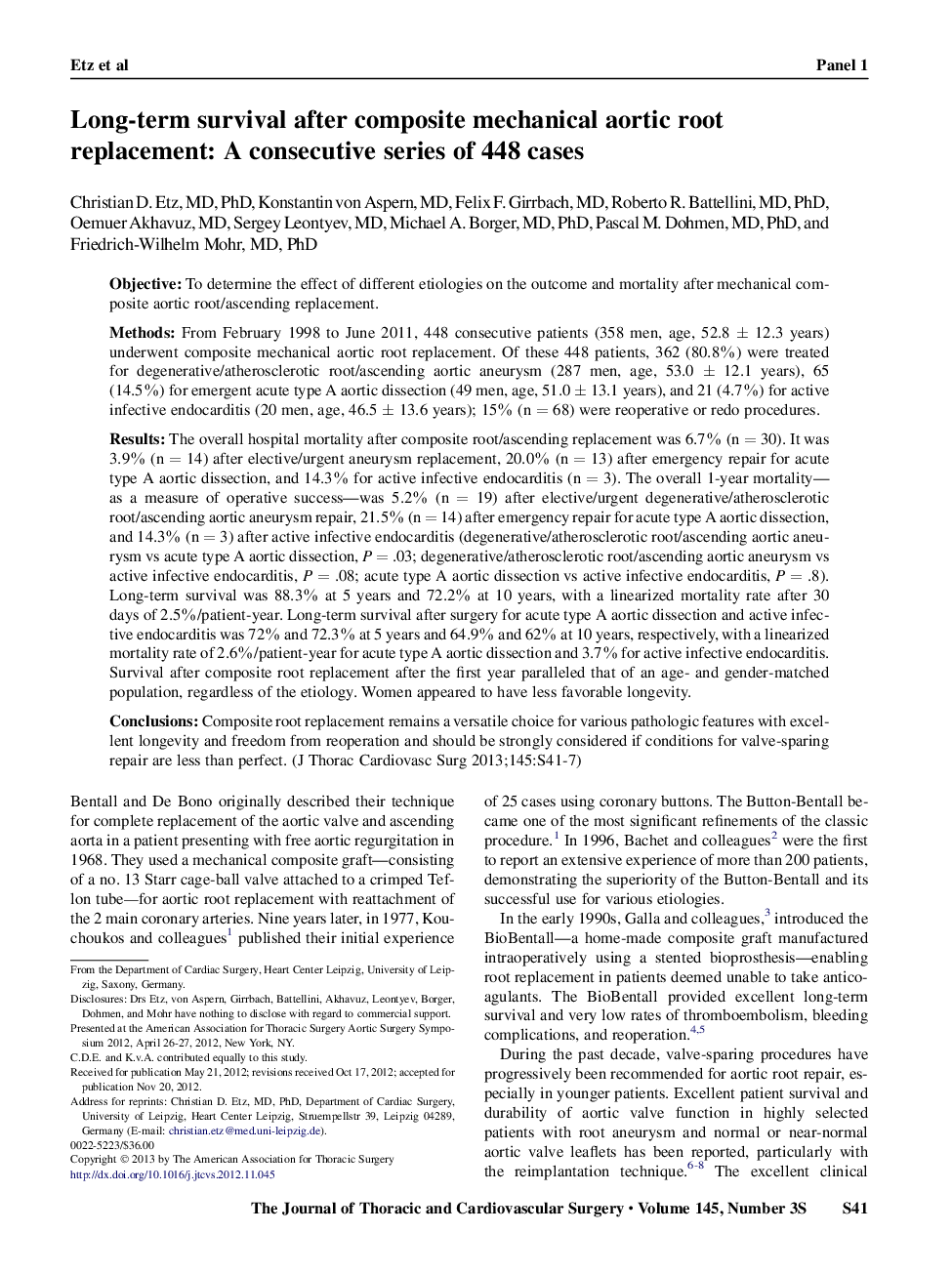| Article ID | Journal | Published Year | Pages | File Type |
|---|---|---|---|---|
| 2981279 | The Journal of Thoracic and Cardiovascular Surgery | 2013 | 7 Pages |
ObjectiveTo determine the effect of different etiologies on the outcome and mortality after mechanical composite aortic root/ascending replacement.MethodsFrom February 1998 to June 2011, 448 consecutive patients (358 men, age, 52.8 ± 12.3 years) underwent composite mechanical aortic root replacement. Of these 448 patients, 362 (80.8%) were treated for degenerative/atherosclerotic root/ascending aortic aneurysm (287 men, age, 53.0 ± 12.1 years), 65 (14.5%) for emergent acute type A aortic dissection (49 men, age, 51.0 ± 13.1 years), and 21 (4.7%) for active infective endocarditis (20 men, age, 46.5 ± 13.6 years); 15% (n = 68) were reoperative or redo procedures.ResultsThe overall hospital mortality after composite root/ascending replacement was 6.7% (n = 30). It was 3.9% (n = 14) after elective/urgent aneurysm replacement, 20.0% (n = 13) after emergency repair for acute type A aortic dissection, and 14.3% for active infective endocarditis (n = 3). The overall 1-year mortality—as a measure of operative success—was 5.2% (n = 19) after elective/urgent degenerative/atherosclerotic root/ascending aortic aneurysm repair, 21.5% (n = 14) after emergency repair for acute type A aortic dissection, and 14.3% (n = 3) after active infective endocarditis (degenerative/atherosclerotic root/ascending aortic aneurysm vs acute type A aortic dissection, P = .03; degenerative/atherosclerotic root/ascending aortic aneurysm vs active infective endocarditis, P = .08; acute type A aortic dissection vs active infective endocarditis, P = .8). Long-term survival was 88.3% at 5 years and 72.2% at 10 years, with a linearized mortality rate after 30 days of 2.5%/patient-year. Long-term survival after surgery for acute type A aortic dissection and active infective endocarditis was 72% and 72.3% at 5 years and 64.9% and 62% at 10 years, respectively, with a linearized mortality rate of 2.6%/patient-year for acute type A aortic dissection and 3.7% for active infective endocarditis. Survival after composite root replacement after the first year paralleled that of an age- and gender-matched population, regardless of the etiology. Women appeared to have less favorable longevity.ConclusionsComposite root replacement remains a versatile choice for various pathologic features with excellent longevity and freedom from reoperation and should be strongly considered if conditions for valve-sparing repair are less than perfect.
